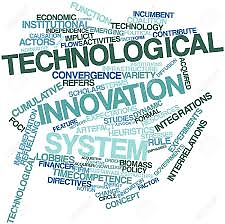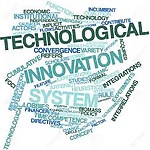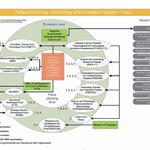National Innovation System Peru
The Republic of Peru has a severely legalistic tradition (Kuramoto 2006), which is reflected in the legislative framework regulating Science, Technology and Innovation (STI) activities. The responsibility of the country for promoting scientific and technological development is made clear in the Political Constitution of Peru (article 14) and detailed in the Framework Act on Science, Technology and Technological Innovation of 2004. The objective of this law is “to regulate the development, promotion, consolidation, dissemination and transfer of Science, Technology and Innovation (STI) in the country”. Furthermore this law determines the definition of the National System of Science, Technology and Technological Innovation (SINACYT) and role of the National Council for Science Technology and Technological Innovation (CONCYTEC).
The National System of Science, Technology and Technological Innovation (SINACYT) in Peru is defined by the Framework Act as: “the set institutions and natural persons of the country devoted to Research, Development and Technological Innovation (RDI) in science and technology and its promotion”. It is articulated by two institutions and several organisations specialized in different areas of national interest.
The National Council for Science, Technology and Technological Innovation (CONCYTEC) is the first institution and governing body of the SINACYT which is responsible for the functions of policies, coordination and promotion of STI activities. It’s umbrella entity is the Ministry of Education.
The second institution is the National Fund for Scientific, Technological and Technological Innovation Development (FONDECYT) which finances the activities of STI. (see figure 1 for an overview). It is an entity under the authority of the Prime Minister.
The remarkable growth of the Peruvian economy and the reduction in poverty over the past decade are favourable circumstances for the country which can result in economic and social development offering the Peruvian population the opportunity to benefit from this progress. But in this decade of economic development, this growth was not accompanied by an improvement in competitiveness and in diversification of the Peruvian economy towards products. The growth from the past decade showed the potential of the country's resources on macroeconomic level. Unless this macroeconomic growth brings economic welfare to the country, this growth is based on the exploitation of the country’s natural resources and not on investments that promote the long-term development of human, entrepreneurial and institutional capacity to innovate and compete in global markets. According to the commandments of culture from Hekkert and van Alphen, the Peruvian culture has a high level of uncertainty avoidance and a normative culture, which does not stimulate long-term thinking and development. These cultural aspects are for example expressed by low investments in R&D and education.
Peru lacks performance in science, technology and innovation (STI) and investment on R&D resources comparing to the rest of South-American countries. Although there are some technology based studies, projects and companies basic facilitations are not enough provided by the government.
Furthermore the education in Peru is at a low level because of the inadequate investment in this domain. This low level of investment is a very important barrier and maybe the main reason for the weak national innovation system of Peru.
Another barrier which affects the national innovation system in Peru is the poor interaction between the private sector, scientific institutions and the responsible state officials. In addition, the lack of general agreement and coordination between the institutions and problems with the hierarchical position of the CONYCTEC hinder the development of a wealthy economy and the the well being of the Peruvian society.
The Peruvian government support several innovation programmes, and agree on the vision to achieve a prosperous, competitive and less unequal Peru which turn its heritage, culture and knowledge into good account to achieve a balanced economic, social and environmental development of the country’s different regions. However, a clear strategy, consensus and leadership is lacking in order to achieve a developing national innovation system in Peru.
The current characteristics and trends that can be recognized in the Peruvian national innovation system indicate that in the following years the development of Science, Technology and Innovation capacities in Peru will mostly depend on the certain conviction that knowledge and technological innovation have become the driving forces of growth and economic development and on the will to make necessary changes in order to create a transition in the Peruvian economy into a knowledge economy. The building blocks of Malerba are not aligned; the coherence and communication between the building blocks network of actors and institutions is not well coordinated.


